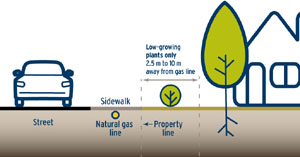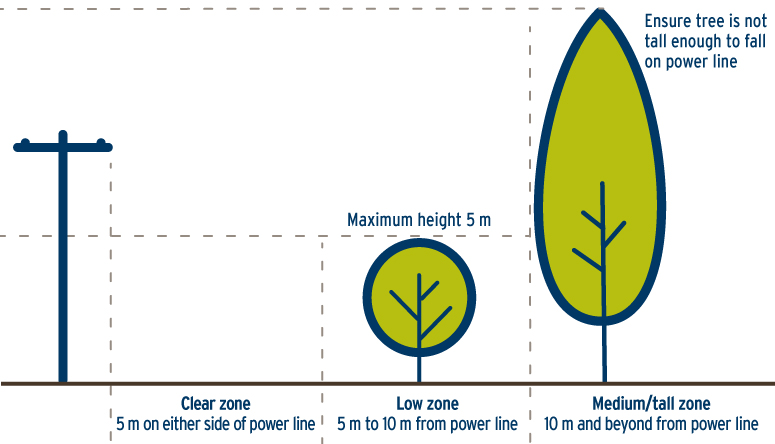Saturday May 27, 2023 | VICTORIA, BC
Posted by Island Social Trends
With the spring and near-summer planting season underway, FortisBC Inc. and FortisBC Energy Inc. (collectively, FortisBC) is encouraging property owners and landscapers to plant trees and other vegetation safely away from power lines, padmount transformers, natural gas pipelines and other FortisBC utility infrastructure.
“When a storm hits, the vast majority of power outages are from trees falling on our power lines. The roots of downed trees can also pull up gas lines,” said Ferenc Pataki, director, transmission, FortisBC. “That’s why property owners have such an important role to play in keeping their property and community safe. It starts with planning their landscapes carefully to avoid potential interference with utility lines as their trees and other plants mature.”
Storms, wind and root disease:
About 25 percent of outages on FortisBC’s electrical system are caused by trees falling on power lines as a result of storms, winds or root disease. Many of these trees originate from private property. To combat this issue, FortisBC has an extensive vegetation management program and at any given time, has upwards of 15 to 20 crews working throughout the province trimming trees and clearing other vegetation away from its power lines, pipelines and other FortisBC utility infrastructure.
FortisBC’s standard is to ensure power lines remain clear from vegetation until the next cycle within the trimming program, typically every five years.
“Safety and reliability are our top priorities. While it’s essential that we’re proactive about keeping our power lines clear, we understand this work can be upsetting for some property owners,” said Pataki. “The best way to avoid having a much-loved tree or shrub trimmed or removed is by planting safely away from FortisBC utilities, taking into consideration the size when it’s fully grown. This will keep you and your community safer and reduce the chance of power outages.”
Trees and vegetation safe distance away:
Property owners can take the following steps to make sure their trees and other vegetation stay safely away from utility lines:
- Choose the right tree for the right place. You’ll need to know how big the tree will be when it reaches full maturity including its height, branch span and root span.
- Before you plant or dig in your yard for any reason, find the locations of underground utility lines by contacting BC 1 Call: click bc1c.ca or call 1-800-474-6886.
- Plant lower growing shrubs so that the branches stay at least five metres away from distribution power lines and electrical infrastructure even at full maturity. That’s the length of a mid-sized car. Plant even farther away from high-voltage transmission lines. Never plant trees directly under power lines or within striking distance of the line.
- Plant shrubs so that the roots stay at least 2.5 metres away from natural gas lines, depending on the size at maturity. That’s at least the width of a typical city sidewalk. No trees are permitted within 10 metres of any high pressure gas pipeline.
- Check if the work requires a permit. The BC Oil and Gas Activities Act requires property owners to have written permission for certain activities within 30 metres of high-pressure natural gas pipeline. You can find this out through your BC1 Call inquiry.
- Never plant trees or other vegetation in gas or electric transmission rights-of-way.
- If your tree or shrub is already growing too close to a powerline, call a utility-certified arborist to trim it back in consultation with FortisBC. Never attempt to do this work on your own and always stay at least 10 metres away, or about the length of a school bus, from power lines.
For more details on FortisBC tree trimming practices and how to plant safely, visit fortisbc.com/safeplanting.







